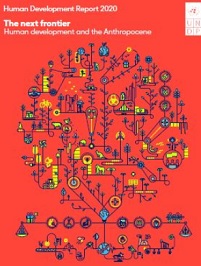 El evento tuvo lugar el martes 16 de marzo de 2021
El evento tuvo lugar el martes 16 de marzo de 2021
San José, Mayo 4 (DP.net).– Representantes de los gobiernos de los 33 países de América Latina y el Caribe, de 20 agencias, fondos y programas de las Naciones Unidas, organismos intergubernamentales, instituciones financieras de la región, sector académico y privado, refrendaron el pasado 18 de marzo su compromiso con la implementación de la Agenda 2030 para el Desarrollo Sostenible y enfrentar las dificultades que ha impuesto la crisis desatada por la pandemia del COVID-19 con el propósito de avanzar hacia un futuro mejor, al término de la Cuarta reunión del Foro de los Países de América Latina y el Caribe sobre el Desarrollo Sostenible 2021.
En la reunión de alto nivel, que se desarrolló de manera virtual del 15 al 18 de marzo bajo la presidencia de Costa Rica, participaron además de los gobiernos y agencias del sistema ONU, 24 organismos intergubernamentales, 21 instituciones financieras de la región, 118 personas del sector académico y 38 del sector privado, además de más de 440 representantes de la sociedad civil de la región, parlamentos y autoridades locales. En total se conectaron 9.608 personas, 3.400 por zoom y 6.200 a través de redes sociales.
La recuperación post pandemia fue considerada en la agenda como una oportunidad para repensar el modelo de desarrollo de América Latina y el Caribe, priorizando nuevas formas de hacer las cosas, que permitan ser a la vez más competitivos, más inclusivos y protegiendo el ambiente que sustenta la economía, el nivel de vida y el bienestar de la región.
- Hits: 4151
 Bajo la larga sombra de la COVID‑19, el 2020 ha sido un año oscuro. Los científicos llevaban años advirtiendo de una pandemia como esta, señalando el aumento de los patógenos zoonóticos —los que tienen capacidad para pasar de los animales a las personas— como reflejo de las presiones de los seres humanos sobre la Tierra.
Bajo la larga sombra de la COVID‑19, el 2020 ha sido un año oscuro. Los científicos llevaban años advirtiendo de una pandemia como esta, señalando el aumento de los patógenos zoonóticos —los que tienen capacidad para pasar de los animales a las personas— como reflejo de las presiones de los seres humanos sobre la Tierra.

